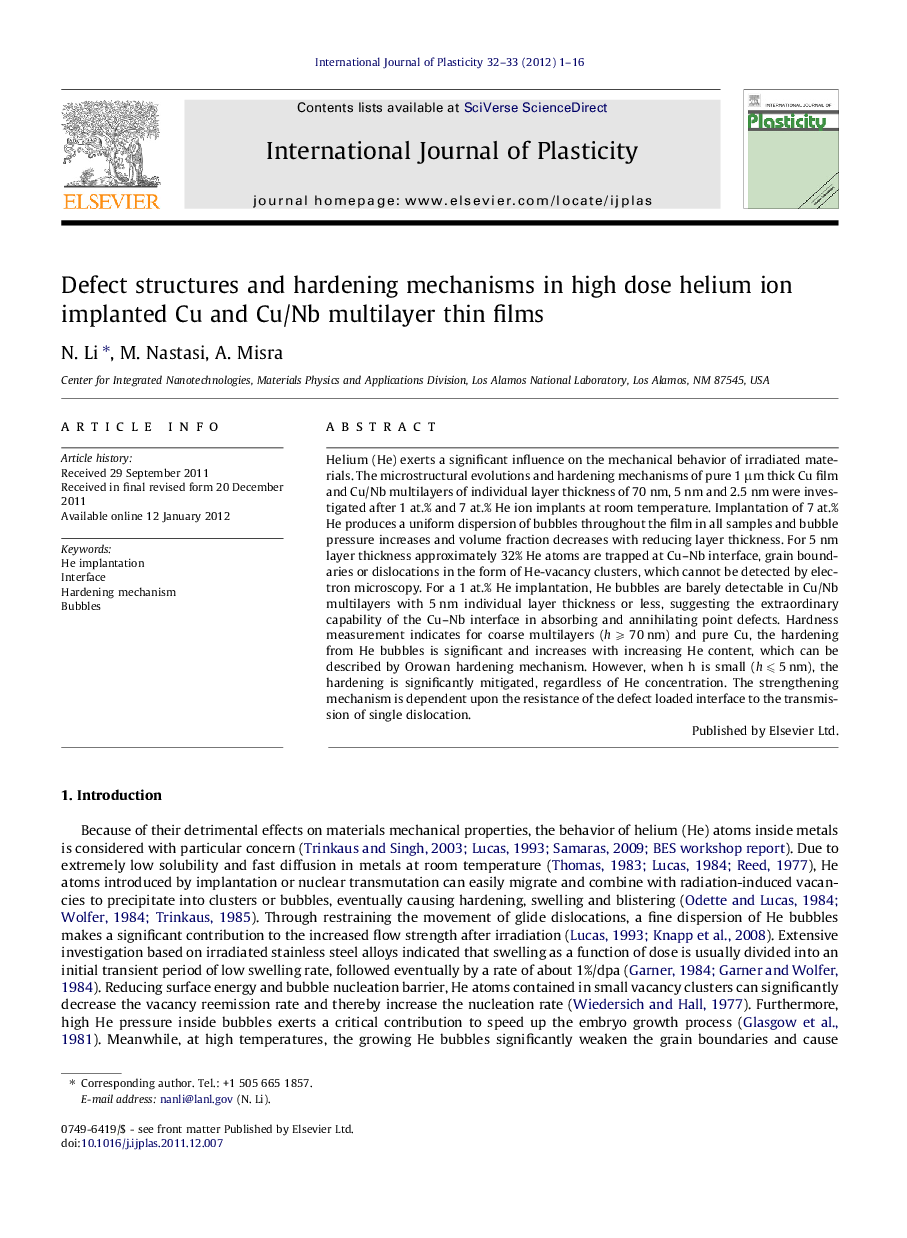| Article ID | Journal | Published Year | Pages | File Type |
|---|---|---|---|---|
| 786280 | International Journal of Plasticity | 2012 | 16 Pages |
Helium (He) exerts a significant influence on the mechanical behavior of irradiated materials. The microstructural evolutions and hardening mechanisms of pure 1 μm thick Cu film and Cu/Nb multilayers of individual layer thickness of 70 nm, 5 nm and 2.5 nm were investigated after 1 at.% and 7 at.% He ion implants at room temperature. Implantation of 7 at.% He produces a uniform dispersion of bubbles throughout the film in all samples and bubble pressure increases and volume fraction decreases with reducing layer thickness. For 5 nm layer thickness approximately 32% He atoms are trapped at Cu–Nb interface, grain boundaries or dislocations in the form of He-vacancy clusters, which cannot be detected by electron microscopy. For a 1 at.% He implantation, He bubbles are barely detectable in Cu/Nb multilayers with 5 nm individual layer thickness or less, suggesting the extraordinary capability of the Cu–Nb interface in absorbing and annihilating point defects. Hardness measurement indicates for coarse multilayers (h ≥ 70 nm) and pure Cu, the hardening from He bubbles is significant and increases with increasing He content, which can be described by Orowan hardening mechanism. However, when h is small (h ≤ 5 nm), the hardening is significantly mitigated, regardless of He concentration. The strengthening mechanism is dependent upon the resistance of the defect loaded interface to the transmission of single dislocation.
► Uniform distribution of He bubbles throughout the films. ► Significant hardening due to bubbles is observed large layer thickness films. ► For the finest multilayers (layer thickness ≤5 nm), the hardening is suppressed.
